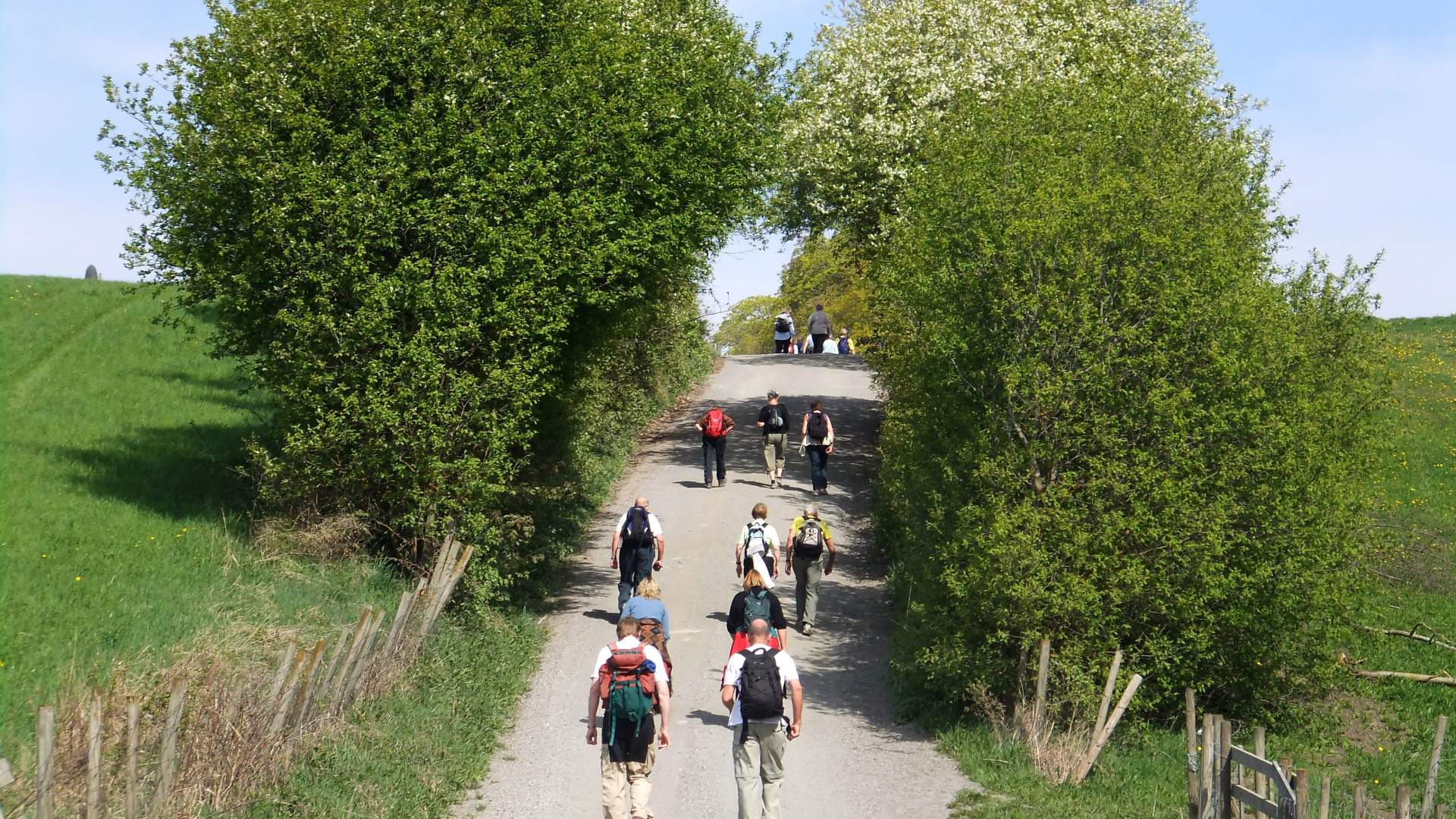The St. Olav way from Bønsnes - Ringerike - Hadeland - Toten - Gjøvik

The St. Olav way from Bønsnes - Ringerike - Hadeland - Toten - Gjøvik
The path mostly follows historical roads in gentle terrains. It passes through vibrant communities and fertile farmlands, packed with cultural heritage sites. Along the path you have the chance to pay a visit to the Pilgrim Centre Granavollen.
If you would like to continue your pilgrimage after you reach Gjøvik, you can follow the path north along the west bank of Lake Mjøsa to Lillehammer. You can also travel across Mjøsa by the world's oldest preserved paddle steamer in timetabled service, Skibladner, which takes you to the city of Hamar. Here you can visit the Pilgrim Centre Hamar and the remainders of the Hamar Cathedral at Domkirkeodden.
Check out the map for the entire route on pilegrimsleden.no
Day 1: Bønsnes church – Klækken Hotel, about 15 km
The first day of walking takes you on to some lovely backroads, trails and medieval paths. One of the legends on Saint Olav claims that Olav the Holy grew up in this area. Inside Bønsnes Church there is a preserved sculpture of the Virgin Mary with child from the 1200s, and a crucifix from the late 1400s. The pulpit in Bønsnes Church is from the late 1600s, and is originally from Grinaker stave church, which is now demolished. The pulpit and the sculpture were both colour adjusted when the church was re-painted in 1726.
Day 2: Klækken – Jevnaker Church, about 15 km
Day two gives you the chance to visit Haug Church, a medieval church built on a site associated with pre-Christian faiths. You can also stop by the museum at Kistefos, which houses an industrial museum, a gallery and a sculpture park. Nearby is another popular attraction, namely Hadeland Glassverk (Hadeland Glass Factory) in Jevnaker. Hadeland Glassverk has been producing handicrafts since 1762.
Day 3: Jevnaker Church – Granavollen, about 15 km
The third day on the pilgrim path goes through farmlands which offer spectacular views over Randsfjorden. You will pass through Granavollen, which was the center for the former county of Hanafylket in pre-Christian times. It is believed that there was an old building dedicated to the gods located near Søsterkirkene (the Sister Churches) from the 1100s.
Steinhuset, the only medieval stone structure in the Norwegian countryside which is not a church, is situated close by the path. This preserved stone house dates back to the 13th century. Nearby is an old rectory garden, which is open for all visitors. If you would like further information on tours or in general, you can address the Pilgrim Centre at Granavollen.
Day 4: Granavollen – Høgkorset, about 20 km
This leg of the trip follows Kongeveien (the King`s Road), which is the former main road from Oslo to Bergen. Kongeveien leads you past the St. Petri Church (1100s) and Hadeland Folk Museum, where you can see a copy of Dynnasteinen (the Dynna Stone) – a runic stone from the mid-1000s.
Walking north towards Høgkorset (the Tall Cross), the path follows Kjølvegen road, also called Høgkors road, which is an old thoroughfare between Hadeland and Toten. This route was described by bishop Jens Nilssøn (1538-1600) during his visit in 1594, and tells the story of how it got the name "Høgkorset" – loosely translated into "the Tall Cross" or "the High Cross". Nilssøn told of several crosses lined up along the road, and it is assumed that these crosses were there until the 19th century. This place was, and still is, a place for prayer and rest for pilgrims.
Day 5: Høgkorset – Lena, about 30 km
Day five leads you on to Kjølvegen road from Randsfjorden across Høgkorset. Further, you will wander through the districts of Toten before arriving at Lena and Hoff. Kjølvegen road was used by pilgrims and other travelers during the Middle Ages (500-1500), and the area offers a variety of natural and cultural experiences. If needed, there are accommodation halfway through this leg of the trip towards Gjøvik.
Day 6: Lena – Gjøvik, about 25 km
Continuing your pilgrimage from Lena, the path goes past Hoffsvangen and Hoff Church, which holds several old cultural traditions. Hoffsvangen is a former centre of power, and all roads in Toten was formerly led to this place.
The destination of this journey is Gjøvik, the White City by Lake Mjøsa. Gjøvik city has a long tradition as a trading centre, and the pedestrian area and city centre has several outdoor restaurants. Here's also a chocolate factory, a glass factory with some of Norway`s best glass blowers, and many shops and boutiques. Another sight is Gjøvik Olympiske Fjellhall (the Gjøvik Olympic Cavern Hall), which was built for the 1994 Winter Olympics.
In the city centre you can find Gjøvik gård (Gjøvik manor). This place has a lovely park area, and hosts many events all year round. If you want to travel from Gjøvik to Hamar by the paddle steamer Skibladner, you will get a pilgrim discount.
- Description originates from pilegrimsleden.no
Source: Visit Øst-Norge
The St. Olav way from Bønsnes - Ringerike - Hadeland - Toten - Gjøvik